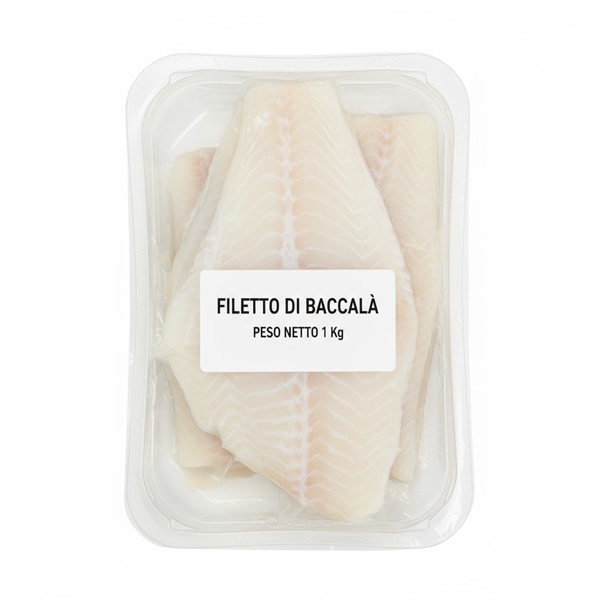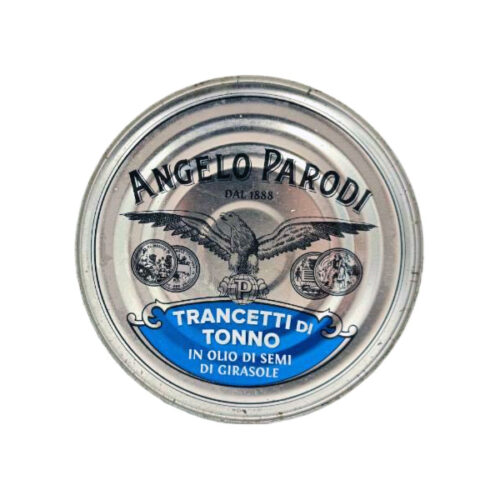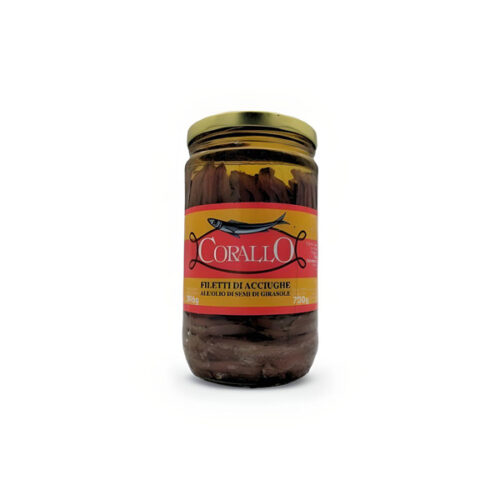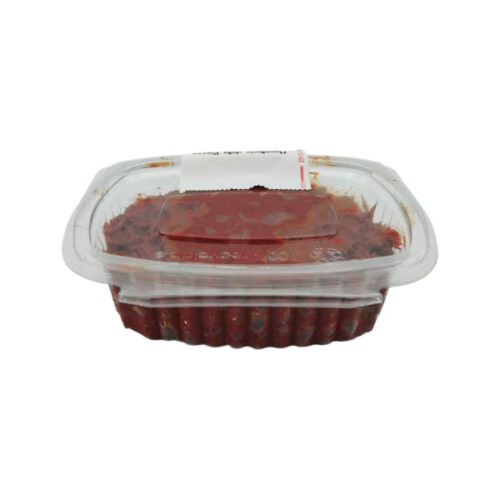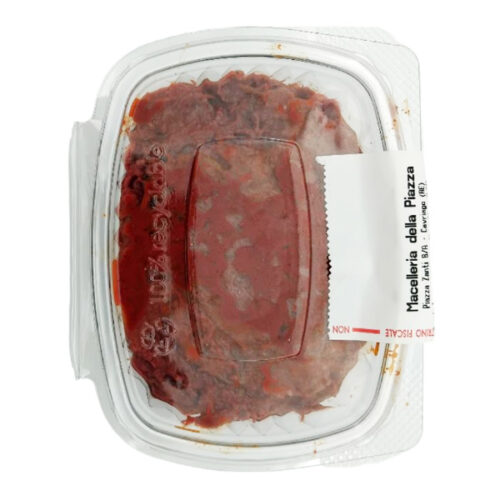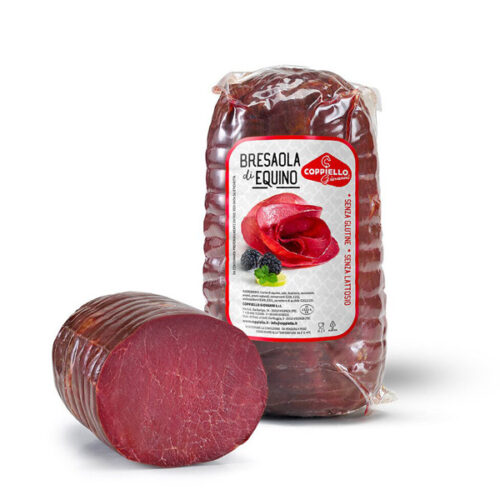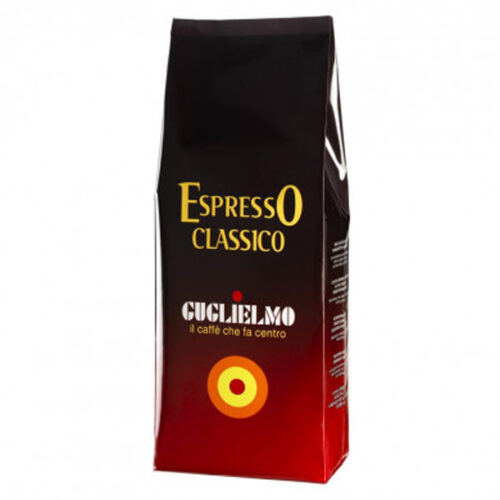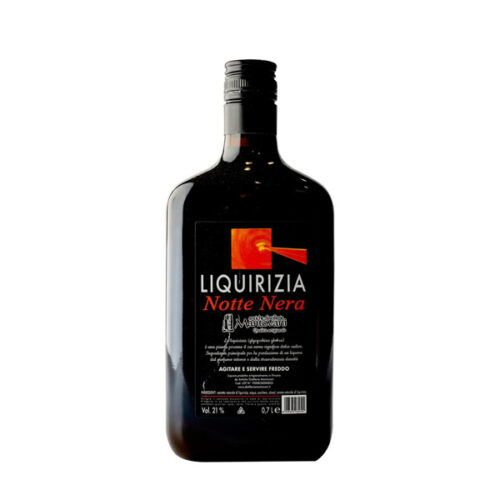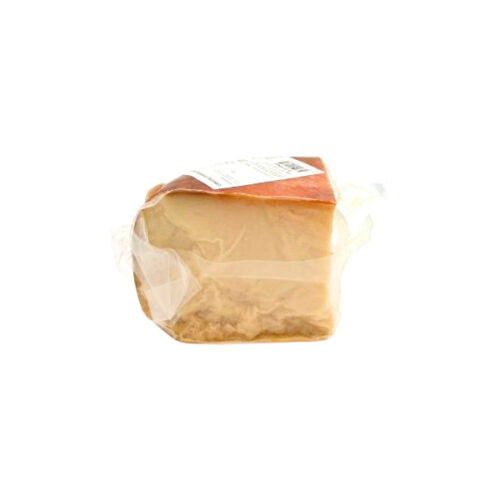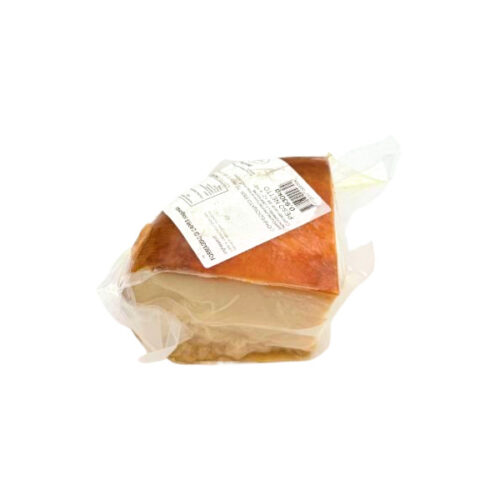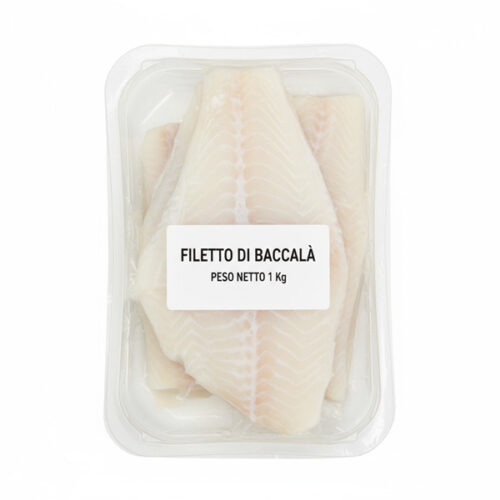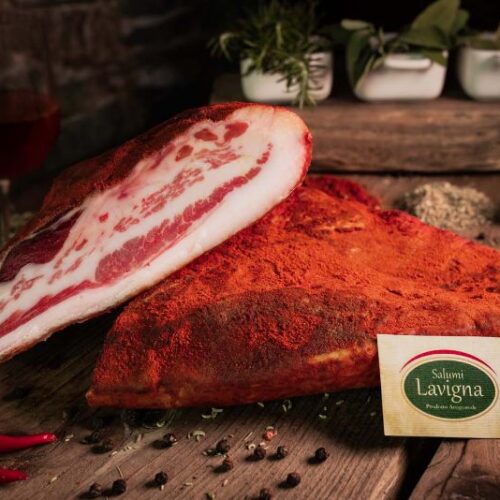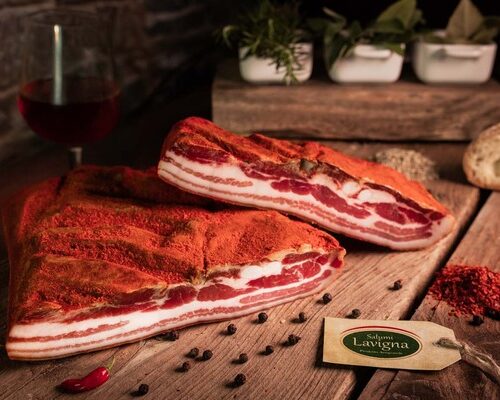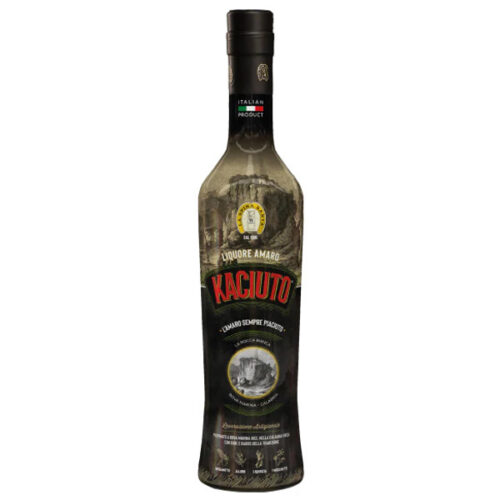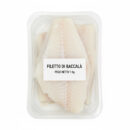Description
Cod – The Treasure of the Sea Preserved in Tradition
Product Description
Codfish represents one of the oldest and noblest canning traditions of European gastronomy, the result of centuries of seafaring wisdom in processing northern cod through the ancient art of salting. This extraordinary fish product is created by processing the prized North Atlantic cod (Gadus morhua) through a salting and drying process that enhances its organoleptic and nutritional properties, creating a food with unique characteristics. Cod is distinguished by its firm but delicate texture, intense but refined flavor, and culinary versatility that makes it the protagonist of traditional recipes throughout Europe, representing a gastronomic heritage that combines history, culture, and haute cuisine in a product of absolute excellence.
History and Tradition of Codfish
Codfish has a thousand-year history rich in tradition:
Ancient Historical Origins
- 10th-11th century: Early conservation techniques Scandinavia
- 1432: Discovery banks Newfoundland Pietro Querini
- 15th century: European Atlantic trade development
- 16th-17th century: Expanding Mediterranean markets
- Modern era: Industrialization of traditional processes
European Geographic Spread
Nordic Countries Producers:
- Norway: World leader in quality production
- Iceland: Centuries-old craft tradition
- Faroe Islands: Ancestral methods preserved
- Scotland: Shetland and Orkney excellence
- Canada: Newfoundland historical tradition
Mediterranean Consumer Countries:
- Italy: Veneto, Liguria, Campania traditions
- Spain: Basque Country, Catalonia specialty
- Portugal: National identity bacalhau
- France: Provence, Languedoc recipes
- Greece: Islands, traditional preparations
Raw Material: Atlantic Cod.
Cod is derived exclusively from selected cod:
Gadus Morhua – Northern Cod.
Biological Characteristics:
- Habitat: Cold waters North Atlantic
- Depth: 150-200m oxygenated water
- Size: 60-120cm optimal length
- Weight: 5-25kg according to maturity age
- Feeding: Crustaceans, small fish, plankton
Premium Fishing Areas:
- Barents Sea: Purest Arctic waters.
- Iceland: Nourishing cold currents
- Newfoundland: Traditional historical benches
- Lofoten: Norwegian archipelago excellence
- North Sea: Seasonal Selection
Quality Selection Criteria
Optimal Parameters:
- Freshness: Daily fishing immediate processing
- Dimensions: Medium-large size best meats
- Season: Winter pre-reproductive hard-boiled meats
- Anatomical area: Back and sides fine parts
- Integrity: No damage networks manipulation
Traditional Production Process
Codfish follows methods established over centuries:
Historical Production Methodologies
Traditional Dry Salting:
- Selection: Fresh cod of superior quality
- Evisceration: Thorough cleaning while maintaining forms
- Opening: Ventral cut preserving integrity
- Salting: coarse sea salt full coverage
- Pressing: Weight for liquid elimination
Controlled Natural Drying:
- Environment: Dry breezy northern climate
- Temperature: 2-8°C ideal storage
- Humidity: 65-75% for optimal process
- Ventilation: Natural constant purifying
- Duration: 3-6 months according to size
Detailed Steps Processing
Step 1: Fish Preparation (2-4 hours)
- Quality control: Selection of perfect specimens
- Thorough cleaning: Removing viscera, gills
- Washing: Cold sea water
- Precise cutting: Experienced ventral opening
- Preparation: Arrangement for salting
Phase 2: Intensive Salting (7-15 days)
- Sea salt: Full coverage coarse crystals
- Stratification: Fish-salt alternation method
- Pressing: Compaction weights
- Purging: Eliminating tissue fluids
- Control: Daily process verification
Phase 3: Drying (90-180 days)
- Controlled environment: Ideal temperature humidity
- Ventilation: Constant dry air
- Placement: Hanging or on trellises
- Monitoring: Periodic quality checks
- Completion: Achieving optimal hardness
Types and Classifications Codfish
Codfish has several quality categories:
Classification by Origin
Premium Norway Cod:
- Lofoten: World Excellence Recognized
- Vesterålen: Certified superior quality
- Finnmark: Arctic absolute purity
- Troms: Centuries-old tradition preserved
- Characteristics: White meat, perfect texture
Traditional Icelandic Cod:
- Reykjavik: Historical craftsmanship
- Vestfjords: West Fjords quality
- Eastfjords: Ancestral methods maintained
- Peculiarities: Intense flavor, compact texture
Italian Commercial Classification
Extra Superior (Premium):
- Features: Perfect shape, uniform color
- Size: Large (60-80cm) fine meats
- Thickness: Consistent, well dried
- Flaws: Absent, excellent quality
- Price: Top range, starred restaurants
First Quality (Standard):
- Form: Good, small defects acceptable
- Size: Medium (40-60cm) versatile
- Consistency: Adequate, well preserved
- Ratio: Optimal quality-price ratio
- Usage: Traditional catering, domestic
Classification by Size
Whole Codfish:
- Presentation: Traditional complete fish
- Weight: 2-8kg according to original size
- Usage: Important preparations, parties
- Storage: Optimal if undamaged
- Tradition: Authentic historical format
Slices and Portions:
- Convenience: Pre-cut for use
- Weight: 200g-1kg practical portions
- Versatility: Different quantity recipes
- Practicality: Facilitated home use
- Freshness: Fast consumption recommended
Preparation and Tempering
Codfish requires careful preparation before use:
Traditional Desalting Process
Metodo Classico Napoletano:
- Initial soaking: 24-48 hours cold water
- Water change: Every 8-12 hours regular
- Control: Tasting to check desalination
- Total duration: 2-4 days according to thickness
- Temperature: Fridge 4°C constant
Modern Rapid Technique:
- Running water: Gentle continuous flow
- Duration: 12-24 hours according to size
- Advantages: Speed, greater control
- Caution: Do not exceed risk of flavor loss
- Monitoring: Frequent checks required
Quality Controls Recovery
Optimal Parameters:
- Consistency: Firm but not hard
- Color: Natural ivory white
- Smell: Clean marine, not pungent
- Savoriness: Slightly salty, balanced
- Texture: Flakes easily, not rubbery
Nutritional Values and Benefits
Codfish offers excellent nutritional properties:
Nutritional Composition (per 100g desalted)
| Nutrient | Quantity | % VNR* | Specific Benefits |
|---|---|---|---|
| Noble protein | 20-25g | 40-50% | Complete essential amino acids |
| Total fat | 0,5-1,5g | 1-2% | Very low lipid content |
| Omega-3 | 200-400mg | – | Cardiovascular health, brain |
| Vitamin D | 2-4μg | 10-20% | Bones, immune system |
| Vitamin B12 | 1.5-3μg | 60-120% | Nervous system, energy |
| Selenium | 25-40μg | 45-75% | Antioxidant, thyroid |
| Phosphorus | 150-200mg | 20-30% | Bones, teeth, cellular energy |
| Potassium | 200-350mg | 10-18% | Blood pressure, muscles |
| Iodine | 80-150μg | 55-100% | Thyroid, metabolism |
| Sodium | 1000-3000mg** | – | Variable according to desalting |
*VNR = Nutritional Reference Values **Depends on the degree of desalting
Functional Health Properties
- High biological value: Easily assimilated complete protein
- Low-calorie: Ideal low-calorie diets
- Mineral-rich: Support metabolic functions
- Omega-3: Cardiovascular and cognitive benefits
- Digestibility: High if well prepared
Traditional Italian Regional Recipes
Codfish protagonist of Italian regional cuisine:
Venetian Tradition
Baccalà alla Vicentina:
- Ingredients: Codfish, onion, milk, EVO oil, parmesan cheese
- Technique: Slow cooking 4 hours wooden ladle
- Consistency: Creamy, perfectly whipped
- Service: Accompanying traditional polenta
- History: 15th century recipe Pietro Querini
Venetian Mantecato Cod:
- Preparation: Desalting, boiling, mantling
- Ingredients: Codfish only, EVO oil, garlic
- Technique: Vigorous whipping to creaminess
- Presentation: Elegant spreadable cream
- Pairing: white polenta, crostini
Ligurian Tradition
Brandacujun (Brandacujùn):
- Origin: Ancient Genoese seafood recipe
- Ingredients: Codfish, potatoes, Taggiasco oil, garlic
- Preparation: Amalgamating ingredients pestle
- Characteristics: Rustic, flavorful, hearty
- Occasions: Christmas Eve, traditional parties
Campana Tradition
Baccalà in Guazzetto Napoletano:
- Sauté: Garlic, parsley, cherry tomatoes, olives
- Cooking: earthenware pan gentle fire
- Flavors: Intense southern, fragrant
- Consistency: tender cod, tasty sauce
- Service: Apulian bread, white wine
Roman Tradition
Codfish in Roman Guazzetto:
- Ingredients: Codfish, tomato, onion, pine nuts, raisins
- Preparation: stir-fry, add cod, cook
- Characteristics: Typical Roman sweet and sour
- History: Poor cuisine ennobled
- Service: First or second course
Modern and Gourmet Preparations
Codfish inspires contemporary culinary creativity:
Starry Haute Cuisine
Codfish in Herb Crust:
- Technique: Sous-vide temperature controlled
- Crust: breadcrumbs, herbs, flavored oil
- Presentation: Elegant modern layout
- Accompaniments: Vegetables, creative sauces
- Chef: Authoritative starred interpretations
Codfish Spherification:
- Modernist: Molecular gastronomy techniques
- Texture: codfish flavor liquid spheres
- Experience: Amazing innovative sensory
- Service: Ceramic spoons, mise en place
- Target audience: Experimental gourmet clientele
Contemporary Fusion
Japanese Tempura Cod:
- Batter: Light crispy oriental
- Frying: high temperature quality oil
- Service: Fusion sauces, oriental vegetables
- Contrast: Crispy outside, soft inside
- Innovation: East meets tradition
Preservation and Storage
Codfish requires specific conditions:
Dry Cod Storage
Optimal Conditions:
- Temperature: 15-18°C dry environment
- Humidity: 50-60% to avoid mold
- Ventilation: Constant circulating air
- Protection: From insects, rodents
- Containers: Breathable, never plastic
Durability Storage:
- Untouched: 2-3 years optimal condition
- Open: 6-12 months adequate protection
- Portioned: 3-6 months rapid consumption
- Deterioration signs: Mold, unpleasant odors
- Prevention: Regular periodic checkups
Post-Renewal Conservation
Desalted Codfish:
- Refrigerator: 2-4°C maximum 3-4 days
- Container: Hermetic, daily water change
- Freezing: Possible but not recommended
- Cooking: Immediate use preferred
- Security: Organoleptic control always

